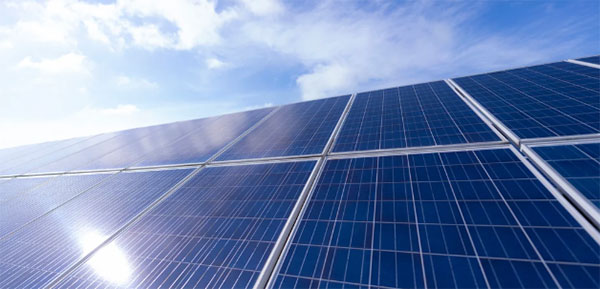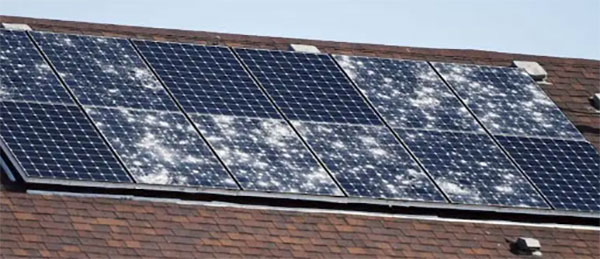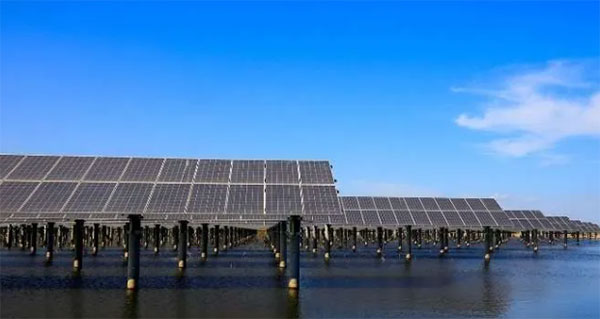Description
Check the inverter for a green light, review monitoring system data, and analyze utility bills for net metering credits.
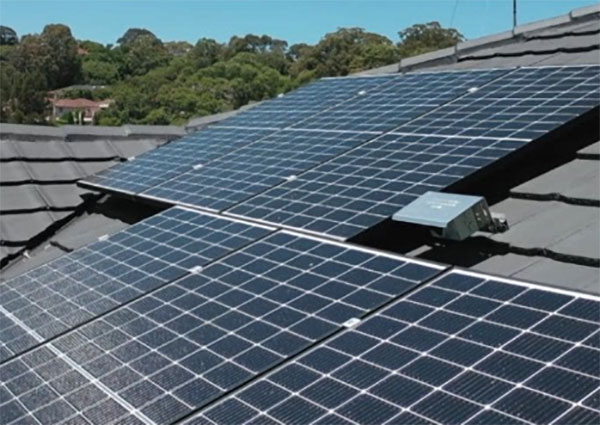
Understanding Grid-Tied Solar Systems
A grid-tied solar system is designed to work in conjunction with the local utility grid, providing homeowners and businesses with power during the day from the sun and from the grid when solar production is insufficient. This setup allows for an efficient, cost-effective way to reduce electricity bills, while also contributing to a greener environment.
What is a Grid-Tied Solar System?
A
Grid-Tied Solar System connects directly to the existing power grid. It allows for the use of solar power when the sun is shining and grid power during nights or overcast days. Excess energy generated can be sent back to the grid, often resulting in credit through net metering policies.
Components of a Grid-Tied System
The main components include
solar panels, an
inverter (or microinverters),
power meter, and sometimes a
monitoring system. Solar panels capture sunlight and convert it into DC electricity. The inverter then converts this DC electricity into AC electricity, compatible with the grid and home appliances. The power meter tracks energy production and consumption, facilitating the net metering process.
- Solar Panels: Typically, a residential system might have panels ranging from 250W to 400W each, covering a roof area of 15-25 square meters. The cost can vary significantly based on efficiency, brand, and material, typically ranging from $0.70 to $1.50 per watt.
- Inverter: The inverter is pivotal in converting DC to AC power. Prices depend on capacity and features, ranging from $1,000 to $3,000 for a typical residential system.
- Monitoring System: Allows homeowners to track energy production and usage in real-time. Systems can vary from basic, included with the inverter, to advanced setups costing up to $500.
How Grid-Tied Systems Work
Energy Production and Usage: During the day, solar panels produce electricity that is either used in real-time by the home or fed back into the grid. At night or during low production, the home draws electricity from the grid.
Net Metering: This process allows homeowners to receive credit for excess electricity they contribute to the grid, effectively lowering their utility bills.
The specifics of net metering can vary by location, affecting the overall savings and efficiency of the system.
Environmental Impact and Savings: Grid-tied systems can significantly reduce carbon footprints. A typical home solar system can save tons of CO2 emissions annually, equivalent to planting over 100 trees every year. The financial savings on electricity bills can range widely, from 10% to 70%, depending on local solar irradiance, electricity rates, and system size.
Maintenance and Durability: Solar systems are known for their longevity and low maintenance. Panels come with warranties of 25 to 30 years, though they can continue to produce energy well beyond that. The inverter, being the most likely component to fail, typically has a warranty of 10 to 15 years.

Signs Your Solar Panels Are Connected to the Grid
Ensuring your solar panels are effectively connected to the grid is crucial for optimal system performance and maximizing the financial benefits of solar energy. Here are the key indicators that your system is properly grid-tied.
Visual Indicators on the Inverter
The inverter plays a critical role in converting the DC electricity generated by your solar panels into AC electricity that can be used by your home or fed back into the grid.
A green light on your inverter typically indicates a healthy connection to the grid. Some inverters may also display specific symbols or messages confirming grid connectivity. It's essential to familiarize yourself with your inverter's normal operation indicators.
Monitoring System Feedback
Most modern solar systems come equipped with monitoring software that provides real-time data on energy production and usage.
A consistent flow of energy production data suggests that your solar panels are functioning and likely connected to the grid. Significant drops in expected energy production, however, could signal connectivity issues or system malfunctions.
Utility Bills Analysis
Analyzing your utility bills can offer conclusive evidence of a grid connection.
Look for net metering credits, which are applied when your system exports excess energy back to the grid. A consistent pattern of credits or a reduction in your electricity charges is a strong indicator that your solar panels are connected and contributing power back to the grid.
Regular Monitoring and Maintenance: To ensure ongoing optimal performance and grid connectivity, it's advisable to regularly check these indicators. Regular maintenance checks can help identify and rectify any potential issues before they escalate, ensuring your solar investment continues to provide value over its lifespan.
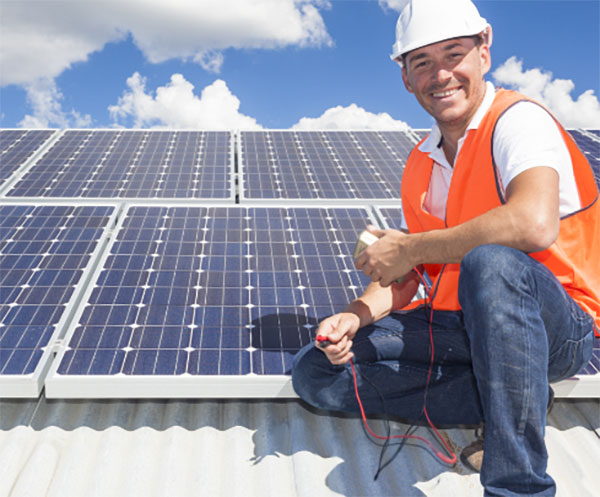
Verifying Connection to the Grid
Ensuring your solar panels are properly connected to the grid is crucial for the system's performance and your financial benefits. This guide outlines the necessary steps and considerations for verifying the grid connection of your solar panel system.
Safety Precautions Before Inspection
Always Prioritize Safety: Before performing any inspection, ensure all safety measures are in place. Wear protective gear, such as gloves and safety glasses, and avoid inspecting panels during wet conditions to prevent electrical shock.
Turn Off the System: To safely inspect the system, turn off the inverter and disconnect any batteries if applicable. This reduces the risk of electrical hazards.
Avoid Direct Contact: Do not touch electrical components directly. Use appropriate tools and follow the manufacturer's guidelines for inspections.
Step-by-Step Guide to Inspecting Solar Panel Connections
Step 1: Visual Inspection
- Check for Visible Damage: Look for any signs of damage to the solar panels, inverter, and wiring. Damage can include cracks, discoloration, or fraying wires.
- Ensure Secure Mounting: Verify that all panels are securely mounted and that mounting hardware is not loose or corroded.
Step 2: Inverter Check
- Power Indicator: The inverter should have a visible power indicator. A green light typically means the system is operating correctly and is connected to the grid.
- Error Codes: Be aware of any displayed error codes. Refer to the inverter's manual to understand their meaning, which can indicate specific connectivity issues.
Step 3: Monitoring System Feedback
- Access the Monitoring Platform: Use the system's monitoring platform to check real-time data on energy production and consumption.
- Compare Expected and Actual Output: If the system is connected to the grid, you should see evidence of energy being exported to or imported from the grid, depending on your current energy use and production.
Step 4: Verify with Utility Bills
- Review Net Metering Credits: Analyze your utility bills for net metering credits, which indicate your system is connected to the grid and exporting energy.
- Check for Consistent Patterns: A sudden drop in credits or exported energy could signal a problem with the grid connection.
Professional Inspection Services
When to Seek Professional Help: If you suspect any issues with your system's grid connection or if your inspection reveals potential problems, it's crucial to contact a professional.
Cost of Professional Services: The cost for a professional inspection can range from $150 to $500, depending on the system's size and complexity. This is a worthwhile investment to ensure the system's optimal performance and safety.

Troubleshooting Grid Connection Issues
Ensuring your solar panels maintain a stable connection to the grid is vital for optimal system performance and maximizing financial returns. This guide provides insights into identifying and resolving common grid connection problems.
Common Grid Connection Problems
Intermittent Power Supply: Fluctuations in power supply, often indicated by lights flickering or appliances turning off and on, can suggest grid instability or issues with the inverter.
No Power Export to Grid: If your system is not exporting excess power to the grid, this could be due to incorrect installation, faulty metering, or problems with the grid connection itself.
Inverter Error Codes: Inverters display error codes that can indicate specific issues with grid connectivity, such as voltage or frequency errors.
Reduced Efficiency: A noticeable drop in efficiency or output could signal connection issues, including partial shading of panels, inverter problems, or grid faults.
DIY Troubleshooting Steps
Check Inverter Display:
- Look for error codes on the inverter display. Consult the manual to understand what these codes mean and the recommended action.
- Ensure the inverter is switched on: Sometimes, the solution is as simple as turning the inverter back on after a power outage.
Inspect Solar Panel Arrays:
- Visual inspection for any physical damage, dirt, or debris that could be affecting performance.
- Check for obstructions that might cause shading and reduce output.
Review Your System s Monitoring App:
- Monitor daily performance trends for unusual patterns that might indicate grid connection issues.
- Compare expected vs. actual energy production to identify any discrepancies.
Verify Grid Connection:
- Ensure your solar system s breaker is in the 'on' position in your electrical panel.
- Check if there's a utility outage in your area which could temporarily affect your system's ability to connect to the grid.
When to Call a Professional
Persistent Error Codes: If error codes continue to appear on your inverter despite resetting, it's time to consult a professional.
No Improvement in Performance: Should DIY troubleshooting not resolve efficiency issues, a professional can conduct a more thorough investigation.
Electrical Issues: For any problems that involve the electrical components of your system, including wiring and connections to the grid, professional intervention is necessary.
Cost Considerations:
- Inspection and Repair Costs: A professional inspection can range from $150 to $500, depending on the complexity of your system. Repairs or replacements will incur additional costs, which vary widely based on the components and labor involved.
- Long-Term Savings: Investing in professional services can enhance system performance and longevity, potentially saving you money in the long run.

Maintaining Your Grid-Tied Solar System
Proper maintenance is essential for maximizing the efficiency, lifespan, and return on investment of your grid-tied solar system. This guide provides actionable tips for routine maintenance, performance monitoring, and component updates.
Routine Maintenance Tips
Regular Cleaning: Dust, debris, and bird droppings can reduce solar panel efficiency by up to 5% annually. For areas with low precipitation, cleaning every 6 months is recommended. In regions with more frequent rain, annual cleaning may suffice. Use a soft brush and soapy water or a garden hose; avoid high-pressure water as it can damage the panels.
Visual Inspections: Perform bi-annual visual inspections to check for any physical damages, such as cracks in the panels or frayed wiring, which could affect system performance or pose safety hazards. Ensure all mounting hardware is secure and free from corrosion.
Vegetation Management: Trim any overhanging branches or shrubs that may shade the panels and reduce their output. Shading can significantly impact efficiency, even if only a small portion of the panel is covered.
Pest Control: Birds, squirrels, and other small animals can damage wiring and components. Consider installing pest deterrents if you notice signs of animal activity around your panels.
Monitoring System Performance
Use a Monitoring System: Most grid-tied systems come with a monitoring platform that allows you to track daily, monthly, and yearly energy production. Monitoring helps identify any significant drops in output that could indicate a problem.
Set Performance Benchmarks: Knowing your system's average performance for each season allows you to quickly identify when something isn't working correctly. Factors like panel degradation, which occurs naturally at about 0.5% to 1% per year, should be considered when setting these benchmarks.
Review Utility Bills: Regularly compare your utility bills with the performance data from your monitoring system. Consistent decreases in net metering credits or higher than usual bills can indicate an issue with system performance or grid connection.
Updating System Components
Inverter Upgrades: The inverter is often the first component to fail in a solar system, typically after 10 to 15 years. Upgrading to a newer model can improve system efficiency, offer better monitoring capabilities, and extend the overall lifespan of your solar system.
Panel Additions: As your energy needs increase, you may find adding more panels beneficial. Ensure any additions are compatible with your current system in terms of voltage and mounting configuration.
Technology Updates: Advances in solar technology, such as more efficient panels or battery storage options, can significantly improve your system's output and reliability. Evaluate new technologies every 5 to 7 years to determine if an update could be beneficial.
Cost Considerations: While maintenance costs are generally low, significant upgrades like inverter replacement or panel additions can range from $1,000 to over $10,000, depending on system size and technology. These investments can improve performance and extend your system's useful life, potentially offering a high return over time.






